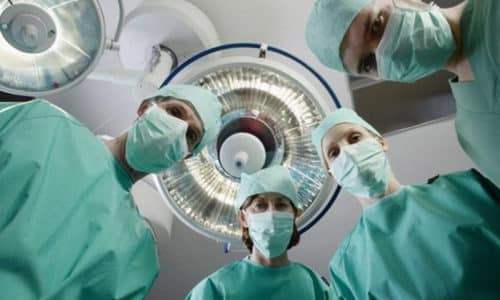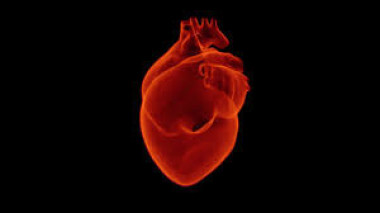Umbilical herniorrhaphy – the only effective method of treatment of a pathological disease. Depending on the initial size of the protrusion, the severity of the clinical case and how carefully the patient follows the doctor’s recommendations during the rehabilitation period, can be a greater risk of future relapse..
The causes of the disease
The appearance of the hernia defect is due to excessive physical labor, age-related changes in the body in which muscle fibres gradually lose their elasticity and any loading is accompanied by increased intra-abdominal pressure.
Predisposing factors – a strong, long lasting cough, disorders of the digestive system, manifested by constant constipation in which a person much straining, presence of diseases of the digestive tract. In women – the development of diastasis after the birth, men and power sports. In children, pathology is often congenital in nature.
Symptoms
The presence of an umbilical hernia is accompanied by such symptoms as pain in the lower abdomen and the navel, there is a growing intensity of pain during and after exercise. Symptoms indicating disruption of the internal organs, excessive flatulence, flatulence, constipation.
During the development of abnormal formations of the patient may have difficulty with the process of urination, pain and burning sensation during miccai, difficult process of urine outflow. In severe cases there are frequent attacks of nausea and vomiting.

Testimony
Surgical intervention in the presence of a hernia in the umbilical region shall be appointed in the following cases:
- the large size of the hernial education, negatively affecting quality of life;
- the presence of complications, which led to infringement of hernial protrusion;
- obstructive intestinal obstruction;
- congenital pathology;
- severe symptomatic picture.
In other cases, when the formation is small in size, signs of disease are mild and do not cause inconvenience, the operation is not carried out. The patient is assigned to the observance of preventive measures aimed at preventing further development of abnormal formations.
Contraindications
Surgery on belly button hernia is not carried out in the following cases:
- child under 5 years;
- there is an infectious and viral disease, occurring in the acute stage;
- the woman is pregnant;
- the patient recently had a heart attack or stroke;
- diagnosed with cardiac or pulmonary insufficiency;
- patient age 70 years and older;
- the presence of cirrhosis of the liver;
- there is a complicated course of varicose veins;
- diabetes mellitus;
- extreme kidney failure.
In the presence of contraindications, the operation can lead to the development of severe complications, to provoke the fatal outcome.
Types of operations
The removal of umbilical hernia, depending on the severity of the clinical case and the presence of complications, may be implemented in various methods. Each of them has its indications for and benefits.
Existing methods:
- 1Bassini – this surgical method involves holding a stretch hernioplasty, when the hernia is small or has not yet completely formed. Anesthesia – local.
- 2Lexer – in this surgical method the doctor separates the pedicle of the hernia SAC, conducts an autopsy on him with further excision. After removal of the fascia is closed with suture.
- 3Mayo – endoscopic surgery, in which gryzenia gate sutured biological tissues taken directly from patients.
- 4Liechtenstein – this method of removal of the hernial diverticulum is the most common. The advantage of the method lies in the fact that it does not require any specific training. During the surgical intervention is carried out installation under the aponeurosis mesh implant without involvement in the process of muscles and tendons.
- 5- mongers – this technique is used for removal of handling of children with six months.
- 6Sapezhko – during the surgery is the excision of the skin that has lost its elasticity along with the navel. Keep the belly button is possible only in case, if the bag has a small size. After removing the bag, the doctor sets its contents, restoring the bodies original position.

Depending on the severity of the clinical situation, the operation for excision of the umbilical hernia can be performed by open method or laparoscopically.
Open way
Conducting abdominal surgery is appointed in cases when the hernia is large in children older than 5 years and adults. This method involves layer-by-layer cutting of the skin, excision of the pouch and return the internal organs inside it, in a normal anatomical position.
To prevent a relapse in the future or if the abdominal wall is too thin, gryzenia gate is closed with a special mesh (stretch plastics), or they are suturing the biological tissues of the patient himself (tension-free plasty). In the second case, use of the tendon.
The advantage of this method is that the doctor has open access to the operated site, in the presence of complications has an opportunity to change the course of the intervention. The disadvantages of the method – long rehabilitation period, need to stay in hospital, saving the pain for several months after surgery.
Laparoscopy
The operation is identical to an open surgical operation. The difference lies in the fact that there are layer-by-layer cutting of the skin and soft structures. For the introduction of surgical instruments and implementation procedures in the skin is a few small punctures. The operation is performed under control of a special device – endoscope.

The advantage of this method is that due to the lack of abdominal incision, the recovery period is much faster, the risks of complications are minimal.
Training
The only operation a strangulated umbilical hernia is carried out urgently, without preparations.
In other cases, when there are no complications, before surgery provides thorough training that includes lab tests and the passage of instrumental methods of diagnostics, including:
- General blood and urine tests;
- ultrasound examination of abdominal organs (especially intestines);
- electrocardiogram;
- the examination of the physician.
Women must pass the inspection at the gynecologist. The operation is performed only on an empty stomach, so the night before the manipulation is to refuse food and take laxatives. In the morning are not allowed anything to eat and drink, if necessary, put a cleansing enema. Also in the morning the patient should be carefully hygiene, shave hair from the pubic area.
The postoperative period
After surgery the patient must wear a bandage below in abdominal cavity pressure was not too high. The patient should use special underwear, to adhere to clinical nutrition. Within one month after the operation, prohibited sports and other active physical activity.
Diet
Diet excludes reception fried and fatty foods, spices and seasonings, marinades, pickles. The basis of the diet – vegetables and fruits, cereals, lean meat and fish. Such a diet promotes normalization of the digestive system, prevents constipation.
Complications
Operation for umbilical hernia, always carries risks of complications, especially in cases when the patient does not comply with doctor’s orders during the recovery period.

Can develop the following complications:
- 1getting an infection in the wound. This complication is virtually eliminated during laparoscopic surgery. If you hold the open intervention after the patient for the prevention of antibiotic treatment.
- 2the Appearance of a seroma – a temporary complication arising from the insertion of an implant. Treatment is not carried out, the pathology resolves itself after 2-3 weeks.
- 3the Formation of haematomas, depending on size resolved on their own or surgery is performed to remove it with the installation of a drainage;
- 4Neurological disorders – result from damage to the roots of the nerve endings. The patient after surgery, occasionally there are painful sensations on the skin decreases the sensitivity, manifested by burning and itching. In most cases neuralgia is after a while she.
- 5Intestinal obstruction – to prevent the development of such complications, after surgery the patient are prescribed medicines that improve the process of intestinal motility.
After surgery, performing breathing exercises and adherence to diet – a pledge that will be able to prevent many complications.
Hernia inguinal, umbilical – types of operations for hernias
Hernia. Inguinal, umbilical, etc. Causes, symptoms, treatment.
Reviews
Sergei, 39 years old, Murmansk: “I Want to say that the operation for hernia is not at all scary, the main thing – not to delay its implementation. I’ve been wearing the brace because I was afraid to do the operation. But was strangulated and had to undergo surgery urgently, and this is harder than planned intervention. Done by open method under General anesthesia. It seems everything went well, but 2 months recurring abdominal pain. The doctor said it will still take some time.”
Marina, 36 years old, Alushta: “After birth there was a diastasis, and began to develop a hernia. Because I wanted to have a second child, the doctor said that it is better to do the surgery to avoid infringement. Laparoscopy was performed under local anesthesia. Everything went quickly, didn’t feel anything. Recovered easily, only had diet stick and wearing a bandage. Even though the price of laparoscopy and higher than doing open surgery, but of much less.”
Andrew, 42 years old, Pskov “No luck with the hernia of the navel. At first like everything was fine, no complications, bowel worked perfectly. But then I started to feel bad, was a pain the stomach. Did an ultrasound, it turned out, formed a hematoma. It was small. The doctor said wait a week, because she can disappear. Not resolved, I had to make a new operation with the installation of drainage. Not to say that it is so difficult, but it was unpleasant to wear a drain for a few days. All ended well, the hematoma was removed, then was restored without complications.”




I feel that is one of the most vital information for me. And i am satisfied reading your article. However should statement on some common issues, The web site taste is wonderful, the articles is in reality great : D. Good activity, cheers